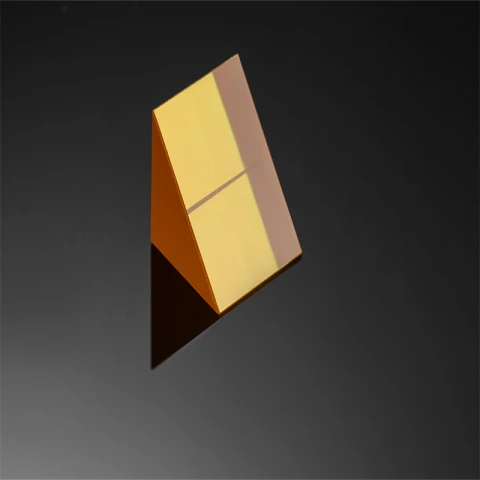Optical ZnSe Right Angle Prisms
Description
Znse right-angle prisms are employed for deflecting light paths or for deflecting the image formed by an optical system by 90°. Znse right-angle prisms usually have a large contact area and angles of 45° and 90°, which make them easier to install and have better stability and strength against mechanical stress.
Optical ZnSe Right Angle Prisms
Specifications |
|
|---|---|
| Material: | ZnSe |
| Dimensions (A): | Not Specified |
| Dimensions (B): | Not Specified |
| Dimensions (C): | Not Specified |
| Surface Quality: | 60-40/40-20 |
| Angle Tolerance: | <10 mm |
Features
- High Infrared Transmission: ZnSe prisms offer excellent transparency in the mid-to-far infrared spectrum (e.g., 2-20 μm).
- Low Absorption Loss: Minimal energy loss during light propagation, ideal for high-power laser systems.
- Thermal Stability: Maintains optical performance under high-temperature environments.
- Chemical Resistance: Resistant to moisture and mild chemical corrosion.
- Precision Geometry: 90° angle accuracy ensures reliable beam steering and reflection.
Applications
- CO₂ Laser Systems: Widely used for beam delivery and focusing in industrial/medical lasers.
- Thermal Imaging: Enhances infrared imaging in military and surveillance equipment.
- Spectroscopy: Key component in infrared spectrometers for material analysis.
- Optical Testing: Utilized for alignment and calibration in optical setups.
- Medical Devices: Applied in non-invasive diagnostic tools using infrared light.
For pricing, technical or any other questions please contact the supplier
- No registration required
- No markups, no fees
- Direct contact with supplier
-
Ships from:
China
-
Sold by:
-
On FindLight:
since 2024
Frequently Asked Questions
ZnSe offers broad infrared transmission (0.5–22 μm), low absorption in the MWIR/LWIR spectrum, high refractive index (~2.4 at 10 μm), and minimal scatter losses. Its chemical stability and durability further enable reliable prism performance in harsh environments.
A tight angular tolerance (e.g., <1 arcminute) ensures minimal deviation from the ideal 90° reflection, critical for maintaining beam path accuracy in interferometry or LIDAR systems. Deviations cause beam walk-off, affecting system resolution.
A dielectric coating ensures >99% reflectivity across specific angles and wavelengths, bypassing the critical angle limitations of total internal reflection (TIR). This allows flexibility in incidence angles and broadband performance.

